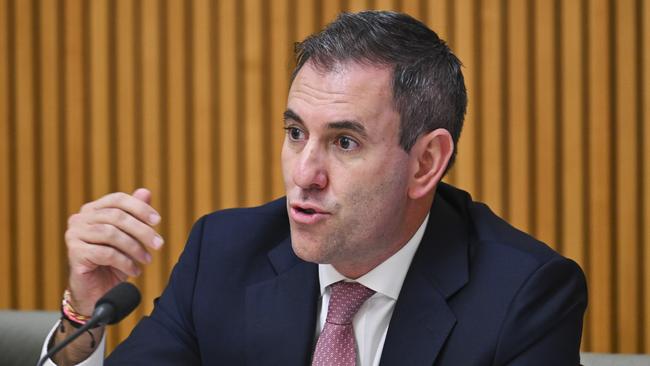
The highest quarterly numbers as a share of the economy on record, no less. This model of state intervention is unsustainable in the long term. The political dividend is equally questionable. Wednesday’s numbers are expected to show the first rise in living standards in almost two years. This is coming from a low base … the base of the cliff from which they fell.
In other words, whatever turnaround the numbers may show, it is likely to be minimal if at all and only go to show what a long journey there is to travel to return to living standards households enjoyed before it all began to go pear-shaped in 2022.
The numbers will also obscure the deeper inflation pain equation further.
The July 1 tax cuts and the temporary energy subsidies from both commonwealth and state Labor governments will kick into Wednesday’s numbers.
Economists are expecting that for the first time the downward curve of real disposable income will begin to turn north.
Yet when governments throw money around during an inflation crisis at this level, there are going to be many losers as well. And those losers will continue to be borrowers, of which there are several million.
As economist Chris Richardson says, the government is helping and hurting at the same time.
According to the pain equation, any turnaround in living standards through government handouts has a counter-effect that will be to prolong the inflation problem and therefore a longer wait for a rate cut.
Whether borrowers have worked out the government is adding to the longevity and dimension of the pain is questionable. The Coalition hasn’t made this case stick. Even if it had, this wouldn’t bother Jim Chalmers too much. The Treasurer appears to have made the calculation that longer and deeper pain for borrowers is worth the headline numbers elsewhere.
Richardson expects that Wednesday will be the first day that living standards begin their long journey back to recovery, having already fallen deeper than any other period since 1959.
“It’s certainly the first time that we will see the impact of tax cuts and energy subsidies,” he says. “What the government has done by handing out a bunch of money … is to have made the inflation challenge a bigger and longer fight than it may have otherwise been.”
If there was any doubt about public sector demand being the greatest driver of whatever growth there still is in the economy, early data released on Tuesday showed government spending – state and commonwealth – had reached $195.8bn in the September quarter.
Put another way, state spending rose almost $6bn, or 3 per cent, for the quarter.
Richardson says it is about shifting the timing of the pain and a shifting in who cops the pain the most; while the tax cuts and energy rebates are real money for households, it’s not free.
Financial markets keep pushing out the timing of a next rate cut or two and have questioned whether there will be a third.
“The losers won’t realise it is government action that has made them losers,” Richardson says. “The recovery in living standards is a real grind … it doesn’t happen with a magic wand.”
Chalmers will run the line that this is government coming to the rescue. He doesn’t realise this is now a large part of the problem.




One undeniable fact will be evident in Wednesday’s national accounts. Whatever growth there is in the economy will be almost entirely due to a mad rush of government spending, both commonwealth and state.